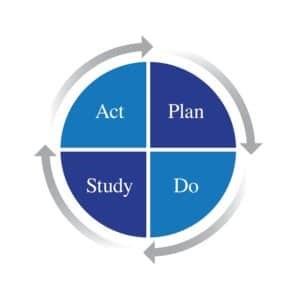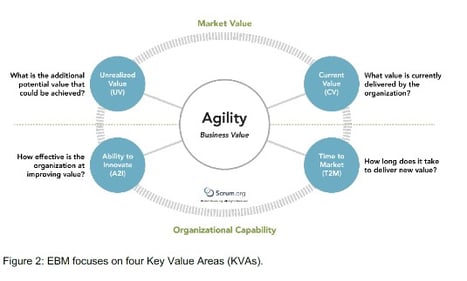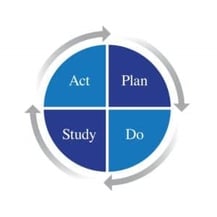Scrum Metrics: Supporting Empiricism through use of Evidence-Based Management

In today’s digital business landscape, businesses are looking for solutions to be more competitive. Some digital businesses have found the Scrum Framework to be that competitive edge with its foundation of empiricism. Empiricism uses knowledge based on experience to make decisions. Scrum framework empiricisms reflect in three pillars of transparency, inspection, and adaption. Scrum’s Evidence-Based Management (EBM) is an empirical approach that supports organizations in demonstrating business outcomes, organizational capabilities, and business results. In the simplest terms, the EBM helps organizations navigate through complex problems by intentional small steps and adapting through continuous feedback loops. (For more on complexity, see the Scrum Theory section of the Scrum Guide at https://www.scrumguides.org/scrum-guide.html)
Scrum’s Evidence-Based Measurement approach allows organizations to avoid traps like metrics turning into milestone deliveries or project task activities. EBM offers an opportunity for the digital organization to experiment and move to their next step to value through these areas:
Key Value Areas – Unrealized value, Current Value, Time to Market, and Ability-to-Innovate.

Scrum.org, 2020
Let’s look at them and see if your organization might benefit from using them.
First Value Area – Current Value
What is the purpose?
The organization reflects on the current value they bring to the customers or stakeholders. It is in its current state. It is not a future state at all.
How does an organization identify it?
EBM shares this value indicating the happiness of customers, stakeholders, and employees.
It can be very simple: measure how happy the customers, stakeholders, and employees are. Is their happiness up or down? The important aspect here is to get a baseline and then, at regular intervals check-in that the current state is moving towards the desired state.
Potential examples:

Second Value Area – Unrealized Value:
What is the purpose?
The organization reflects on what future value they could provide to their customers, stakeholders, or employees. Based on the current value, what is the difference? That difference is the potential unrealized value.
How does an organization identify it?
EBM shares this value is about understanding ALL the desired needs or future state that our customers, stakeholders, and employees would like to have to be very, very happy. It allows the organization to evaluate where finances are being expended.
Potential examples:

Third Value Area – Time to Market:
What is the purpose?
The organization determines how quickly it can deliver something new to its customers or stakeholders.
How does an organization identify it?
EBM shares this value is about understanding how the organization does things, how the organization learns, and how quickly the organization applies what they learned.
Potential examples:

Fourth Value Area – Ability to Innovate:
What is the purpose?
The organization determines how good they are at developing new ideas that might deliver value to meet customer needs.
How does an organization identify it?
EBM shares the ability to innovate the organization by looking for blockers and dependencies and addressing them. What are the “gotchas” that prevent customers from being happy about the delivered solution?
Potential examples:

Gathering the information for EBM’s 4 values provides the organization with a baseline and is a great first step. However, the biggest secret to success the Scrum’s Evidence-Based Measurement guidance offers is to be intentional with small steps of change to move the needle in each of the four value areas. EBM supports using the PDCA model derived by W. Edwards Deming to accomplish this.

https://deming.org/explore/pdsa/, n.d.
Deming’s approach is built on:
Plan: What is the organization trying to do? (What is the problem they are trying to solve?)
Do: What are the intentional, time-boxed steps the organization will use to solve it?
Check: What are the outcomes?
Act: If the outcomes are great, then continue with that process. If the outcomes are not as expected, what changes does the organization make?
Scrum’s EBM guidance has been applied in various industries.
In one great case study, a Real-Estate Software Provider shared that after one year of using the EBM, the company had its’ largest revenue growth in over 10 years. Its success was also reflected in its EBITDA and Net Promoter score.

Scrum.org, 2018
This case study is only one example. Has your organization used this approach? If so, what were your results?
Appendix:
The sample below shares an approach that might be synthesized from the Scrum Evidence-Based Measurement.

More from the blog
View All Blog PostsThe Scrum Master Role Is Evolving. Are You?
Continue ReadingCOVID 19 – Changing the Digital Banking Landscape: Part 2
Continue ReadingAn Agile Coach’s Guide to Managing Pride, Ego and Personal Growth
Continue ReadingSubscribe to Our Blog
Fill out your email address to receive notifications about new blog posts from CC Pace!

